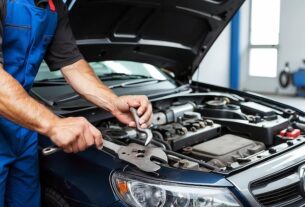One of the most impressive aspects of professional car paint repair is how seamlessly the new paint blends with the old. Ever wonder how body shops manage to recreate your car’s exact color—even if it’s a 10-year-old model or a limited edition? The answer lies in a combination of technology, expertise, and high-precision tools.
In today’s auto body industry, matching paint isn’t just a visual skill—it’s a science. Here’s how modern professionals, including specialists at Automobicon car paint repair, accurately match original car colors and deliver invisible repairs.
1. Understanding OEM Paint Codes
Every car comes with a factory-issued OEM (Original Equipment Manufacturer) paint code, typically located on a label inside the driver-side door, glove box, or trunk. This code is a reference to the specific color formula used when the vehicle was manufactured.
However, matching the OEM code doesn’t always guarantee a perfect match. Why?
- Over time, UV exposure, oxidation, and weather conditions alter the car’s paint tone.
- Two cars with the same paint code may look slightly different due to age or location.
- Even factory batches of paint may vary slightly due to environmental or mixing factors.
This is why paint matching often goes beyond the code—it requires real-time adjustment.
2. Using Digital Spectrophotometers
Modern paint shops use digital spectrophotometers—a handheld device that scans the damaged panel’s surface and reads the exact paint color composition in terms of hue, saturation, brightness, and more.
Here’s how it works:
- The device captures light reflections from the car’s paint.
- It analyzes the surface color under standardized lighting conditions.
- It generates a precise digital formula that considers current paint fading or tint.
This color profile is then fed into a specialized software system to formulate a paint mix that matches the current shade—not just the factory original.
3. Mixing Paint with High-Precision Tools
Once the desired color formula is ready, auto body shops use a computer-controlled mixing system to blend the pigments, binders, and additives.
The system ensures:
- Exact weight-based measurements
- Consistent mixing ratios
- Repeatable accuracy for multiple batches
Professionals at Automobicon car paint repair, for example, have access to advanced paint booths and systems that replicate factory finishes, ensuring that the new color blends perfectly with surrounding panels.
4. Test Panels and Spray-Out Cards
Before applying the paint to your car, technicians often spray a test panel or spray-out card to visually confirm the color match under different lighting conditions—sunlight, shade, and artificial light.
This visual inspection allows:
- Fine-tuning of the paint mix if needed
- Matching the level of metallic flake, pearl effect, or matte/gloss finish
- Ensuring the repaired area will be visually seamless
Only after the technician is fully satisfied with the test result is the color applied to your vehicle.
5. Blending Techniques for Seamless Results
Even with a perfect color match, professionals use blending techniques to ensure the new paint transitions smoothly into the surrounding panels.
- Adjacent panels may be partially painted to create a gradual fade.
- Clear coat is applied across broader areas for a uniform finish.
- Buffing and polishing follow to level the surface and maximize gloss.
Blending makes the repair indistinguishable from the rest of the car, especially in complex colors like tri-coats or metallic finishes.
Final Thoughts
Accurate color matching is both a science and an art. With tools like OEM codes, digital spectrophotometers, precision mixing systems, and expert blending, professionals can make even extensive paint repairs look factory-new.




